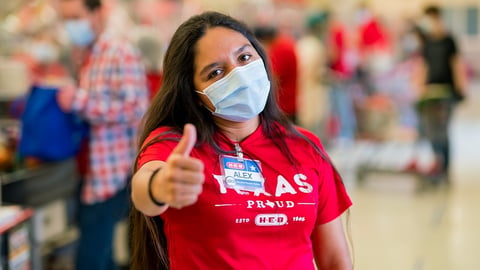Retail Sales Reveal a Mixed Bag of Results
It was more like a spark than a blast of flame, but the 1.2% month-over-month U.S. retail sales growth in July is what passes for commerce optimism during this particular part of the pandemic.
The latest retail figures from the U.S. Census Bureau, released Friday, marked the third consecutive month of growth — even if the 1.2% increase came in below Wall Street Estimates of 2.3%. The new figures come amid what can only be described as a unique back-to-school shopping season, and as retailers look toward the holidays for at least some revenue recovery during this often miserable year.
A statement from the National Retail Federation reflected the general tone of response to the new retail growth numbers — cautious optimism combined with hope of federal action to encourage more consumer spending in the coming months.
“Retail sales for July were another positive step in the right direction as our economy continues to slowly reopen,” NRF President and CEO Matthew Shay said. “Americans are showing their continued resilience and willingness to spend in the face of this unprecedented pandemic and government actions to date have clearly supported consumers and the economy in this process. Retailers all across the country have demonstrated that their stores and supply chains can be operated safely and effectively for associates and their customers by following established guidelines and protocols. We encourage Congress and elected leaders at all levels of government to enact policies that support consumers and keep the economy open.”
PRODUCT CATEGORIES
Specifically, the NRF and the Census Bureau found that in July:
- Electronics and appliance stores were up 22.9 percent month-over-month seasonally adjusted but down 2.3 percent unadjusted year-over-year.
- Clothing and clothing accessory stores were up 5.7 percent month-over-month seasonally adjusted but down 19.6 percent unadjusted year-over-year.
- Health and personal care stores were up 3.6 percent month-over-month seasonally adjusted and up 3.1 percent unadjusted year-over-year.
- Online and other non-store sales were up 0.7 percent month-over-month seasonally adjusted and up 25.8 percent unadjusted year-over-year.
- Grocery and beverage stores were up 0.2 percent month-over-month seasonally adjusted and up 12.8 percent unadjusted year-over-year.
- Furniture and home furnishings stores were unchanged percent month-over-month seasonally adjusted but up 0.5 percent unadjusted year-over-year.
- General merchandise stores were down 0.2 percent month-over-month seasonally adjusted but up 3.1 percent unadjusted year-over-year.
- Building materials and garden supply stores were down 2.9 percent month-over-month seasonally adjusted but up 16 percent unadjusted year-over-year.
- Sporting goods stores were down 5 percent month-over-month seasonally adjusted but up 18.9 percent unadjusted year-over-year.
WHAT’S NEXT?
One of the big stories of the pandemic, of course, has been the further rise of e-commerce — a trend especially noticeable in food retail but which has been widespread. CommerceHub, which sells online marketplace, fulfillment and other e-commerce services to merchants, said that in June and July, order volumes spiked for crafts and office supplies (+148%), patio and garden items (+122%) and electronics and entertainment products (+115%).
“The online order volume across our network in July remained around all-time highs, a clear indication that a shift in how consumers buy things as the COVID-19 pandemic continues is here to stay for the foreseeable future,” said CommerceHub CEO Frank Poore. “Simply put: consumers feel safer shopping online rather than in store.”
The next six months or so will not only bring new clarity about back-to-school and holiday shopping trends, but a clearer picture of whether the federal government will authorize more stimulus payments to boost the economy (to say nothing about the spread of the virus itself). Recent research has indicatedthat any new pandemic stimulus payments will largely go toward groceries and other household essentials. A delayed Amazon Prime Day — it might happen in October — could also inject some spending into the economy.
For the time being, though, retailers continue to improvise as best they can, beef up their e-commerce offerings and hope for the best in the third and fourth quarters.





